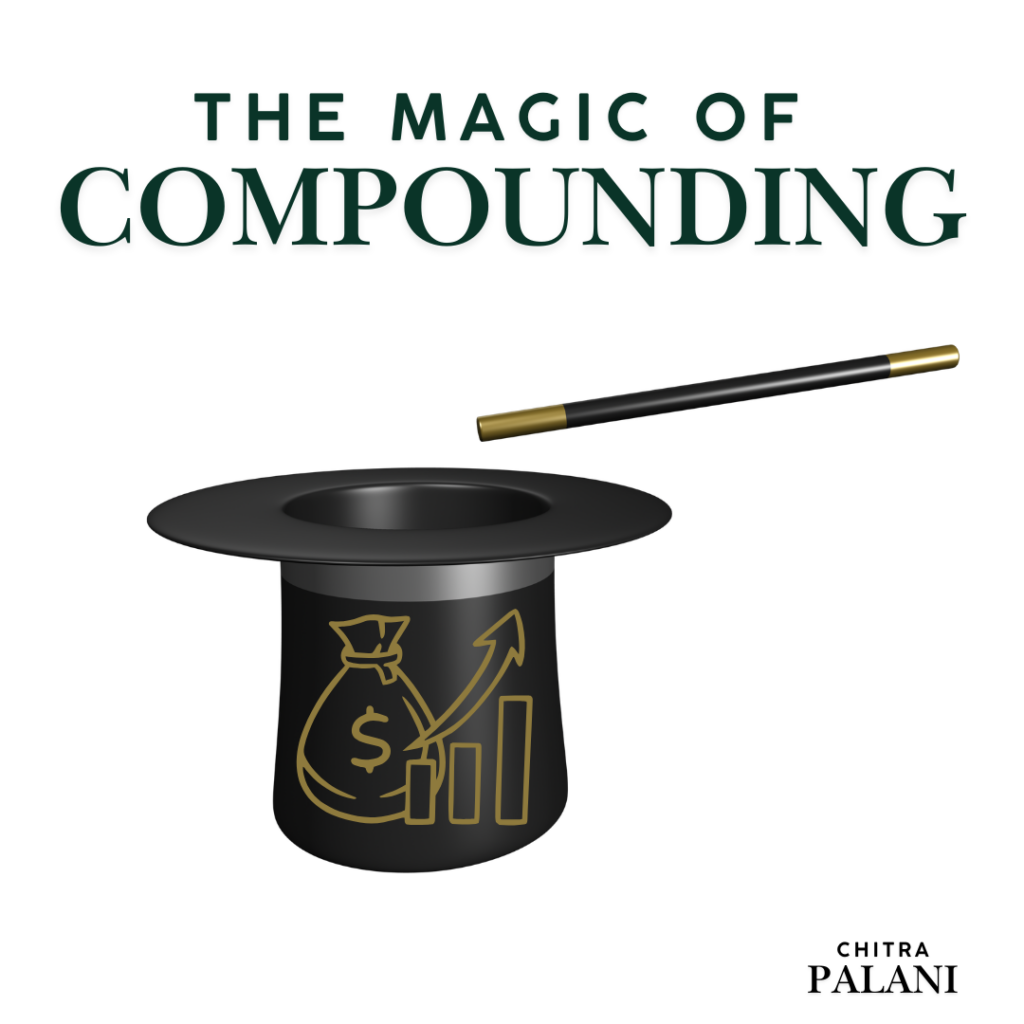The Power of Compounding: How to Start, When to Start, and How to Review
One of the most powerful tools in wealth creation is compounding—a process so simple yet so effective that Albert Einstein famously referred to it as the “eighth wonder of the world.” Compounding is not just a financial strategy; it’s a mindset that rewards patience and consistency.
In this blog, I’ll explain what compounding is, how beginners can get started, why starting early matters, and how to regularly review your progress.
What is Compounding?
At its core, compounding is the snowball effect of earning returns on both your initial investment and the reinvested earnings. Over time, these reinvested earnings generate returns themselves, leading to exponential growth.
For example:
• If you invest £1,000 at a 10% annual return, after one year, you’ll have £1,100.
• By reinvesting that £100, your second year’s return will be calculated on £1,100, resulting in £1,210—and so on.
The longer you allow your money to compound, the bigger your snowball grows.
How to Start for Beginners
1. Set a Goal
Begin by asking yourself: What are you investing for?
• Building an emergency fund?
• Saving for retirement?
• Funding a child’s education?
Knowing your “why” will guide your investment strategy.
2. Understand the Tools of Compounding
• Savings Accounts: Basic but low returns.
• Index Funds: Low-cost funds that track the market, offering steady growth.
• Dividend Stocks: Reinvest dividends to benefit from compounding returns.
• Retirement Accounts (e.g., ISAs, Roth IRAs): Tax advantages enhance compounding.
3. Start Small, But Start Now
Don’t wait for the “perfect time” or a large sum to invest. Even small amounts, like £50 per month, can grow significantly over decades.
Example: Investing £50 per month at a 10% annual return:
• In 10 years: £10,000+
• In 20 years: £38,000+
4. Automate Your Investments
Automating your contributions removes emotion and ensures consistency. Set up direct debits or standing orders to your investment account.
5. Leverage Time
The earlier you start, the more time you give compounding to work its magic. This is why compounding is often referred to as the “time value of money.”
When to Start?
The answer is simple: NOW.
Why?
1. Time is Your Ally
The longer your money is invested, the more powerful compounding becomes.
• Example: If you invest £5,000 at age 20 with an annual 8% return, it will grow to £160,000 by age 60. Wait until age 30 to invest, and you’ll have just £80,000.
2. Delaying Reduces Your Potential Gains
Each year you delay starting, you lose out on years of exponential growth. Even if you start with a small amount, those early years matter more than you think.
How to Review and When to Review Your Investments
1. Set a Review Schedule
Regular reviews keep your investments aligned with your goals. A good rule of thumb:
• Quarterly: High-level check-ins to ensure you’re on track.
• Annually: A deeper dive to rebalance and assess long-term goals.
2. Assess Performance
Compare your portfolio’s performance against your expectations. Is it meeting your projected growth rate?
Key metrics to monitor:
• Annualized Returns: How much your investments have grown annually.
• Dividend Reinvestments: Are dividends being reinvested as planned?
3. Rebalance Your Portfolio
Over time, certain investments may grow faster than others, skewing your portfolio. Rebalancing ensures you maintain your desired asset allocation (e.g., 60% stocks, 40% bonds).
4. Factor in Life Changes
Review your investments whenever there’s a significant life change, such as a new job, marriage, or approaching retirement.
5. Stay Disciplined
Compounding works best with consistency and patience. Don’t panic over short-term market fluctuations; focus on the long-term trajectory.
Tips to Maximize the Power of Compounding
1. Reinvest Everything
Always reinvest dividends, interest, and gains to keep compounding uninterrupted.
2. Increase Contributions Over Time
As your income grows, increase the amount you invest. Even a small annual increase can make a big difference over decades.
3. Minimize Fees
High fees eat into your returns and reduce the power of compounding. Opt for low-cost index funds or ETFs whenever possible.
4. Stay Consistent
Consistency beats perfection. Even during downturns, stick to your plan—this is when you buy assets at lower prices, accelerating future growth.
5. Avoid Debt
Compounding works against you when you’re paying high-interest debt. Clear expensive debts first to free up cash for investments.
The Bottom Line
The power of compounding lies in its simplicity: start early, invest consistently, and give your money time to grow. It’s not about timing the market; it’s about time in the market.
Whether you’re just starting your financial journey or looking to refine your strategy, compounding is the foundation for long-term wealth.
Take Action Today
• Start small.
• Commit to consistency.
• And let time do the rest.
Remember, the best time to start was yesterday. The second best time is now.
What’s your next step? Share your thoughts or questions in the comments, and let’s build your compounding strategy together!



